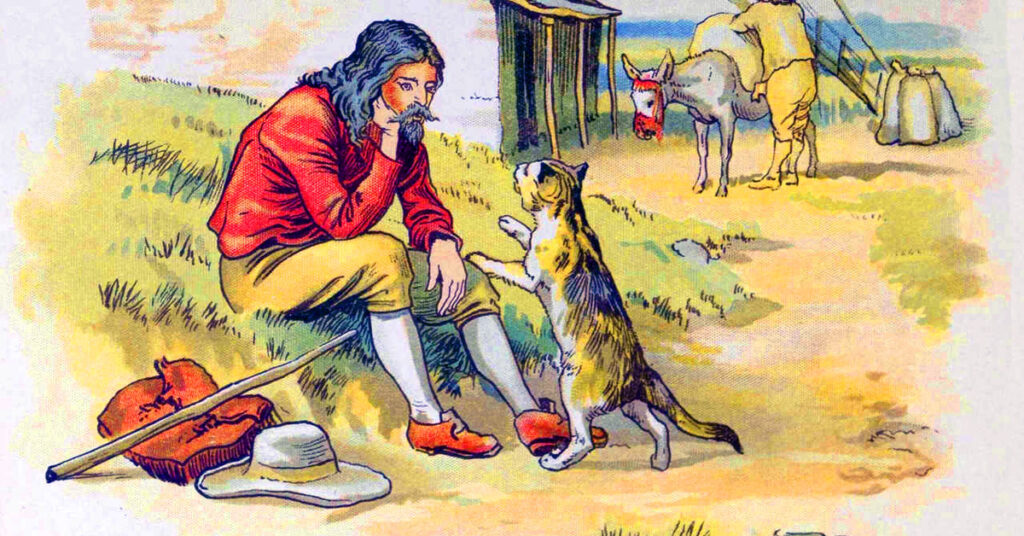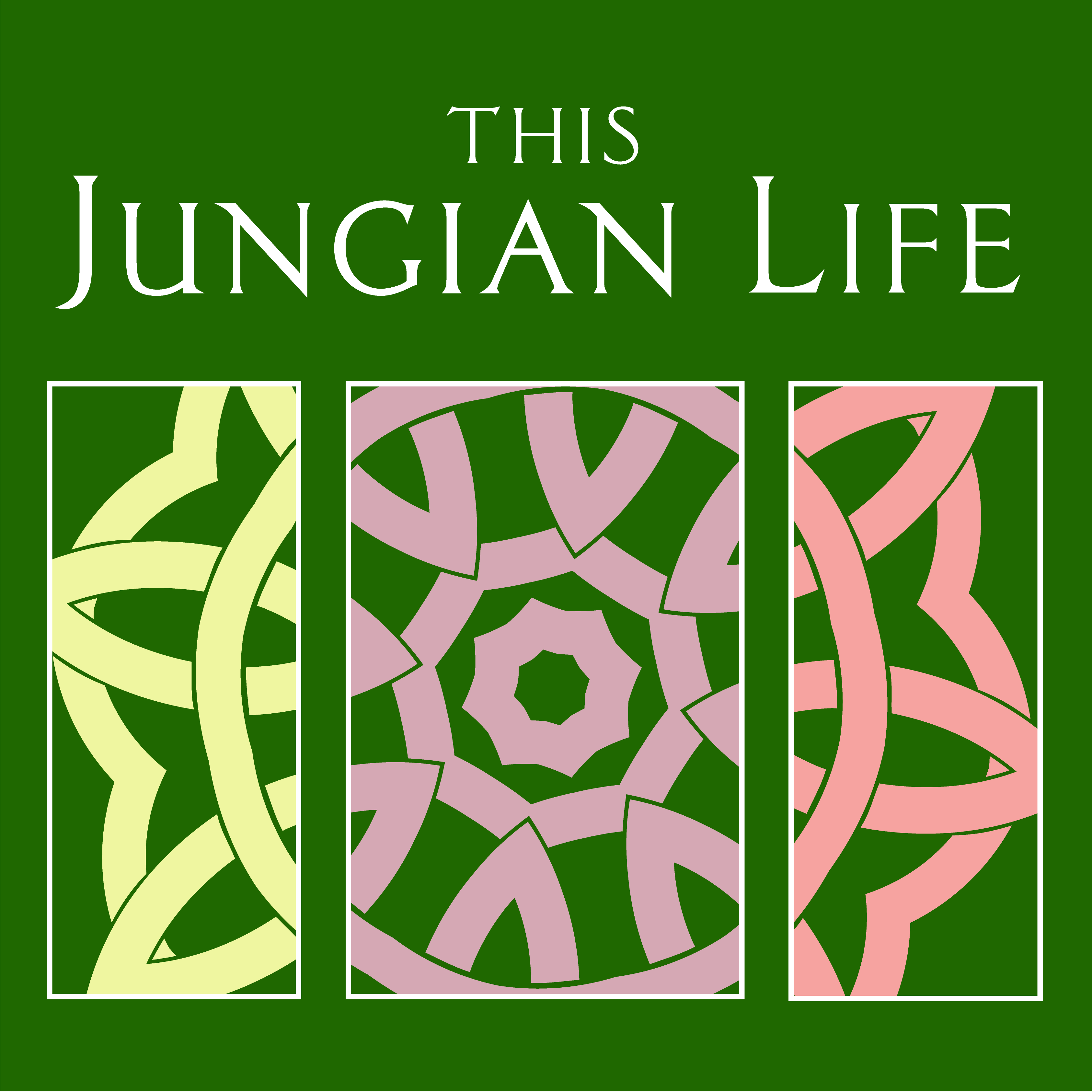
Something about a talking cat wearing clothes has captured our imagination for over 500 years, so it’s about time we tackle a Jungian analysis of Puss in Boots.
From fairytales in the Late Middle Ages to recent YouTube videos, people delight in dressing their pets in human garb and even more so when they adopt human behaviors. If a parrot squawks curse words, we giggle, and if a dog-bark sounds like a human phrase, we lean in with wonder. So perhaps the fairytale Puss in Boots can help us understand our creative urge to project essential aspects of psyche onto our animal companions.
“Puss in Boots” traces its roots back to the oral storytelling traditions of multiple cultures. The version most familiar to Western audiences was adapted by Charles Perrault in the late 17th century, during France’s golden age of fairytales. Perrault’s France was a society in flux, marked by the gradual erosion of feudalism, the rising bourgeoisie, and the centralization of royal power. This socio-political backdrop influenced Perrault’s depiction of the cat as a clever social climber, a mirror of the aspirational bourgeoisie. The cat’s ability to navigate social hierarchies and effect change through cunning rather than birthright resonated with the evolving social order.
Though relevant at the time, these economic and political shifts do not account for the tale’s enduring presence. From books to films, this cunning and charismatic cat has charmed us with his wit, charm, moral ambiguity, and ethical conundrums remaining relevant.
Its significance over time suggests archetypal images and themes are likely at play. Across time cats have symbolized supernatural instincts, autonomy, adaptation, and audacity. Thousands of mummified cats were discovered in ancient Egyptian burial sites. Aligned with the feline goddess Bastet, even Puss carries her protective, loyal, and nurturing powers, not to mention the supernatural ability to use human speech.
In the modern era, animals and their images lost their deeper meanings. As Descartes’ separation of mind and body advanced, animals lost their voices. We slowly dismissed our animal bodies and their insistent demands. The neurologist Sigmund Freud, studying the voiceless diseases of the human nervous system, was the first to return speech to our thwarted instincts. It was Jung who restored their wisdom.
Fairytales continue to carry ancient wisdom that our conscious minds have forgotten. Through symbolic images and archetypal themes, they speak directly to our personal unconscious, inviting the truths we once sensed to reactivate. Puss in Boots is an example of the restoration of life-saving instinct.
Our tale begins with the old miller distributing his estate to his three sons. The eldest gets the mill, the middle gets the donkey, and the youngest gets the cat. If we apply Jung’s symbolic lens, this initial psychic situation becomes both accessible and interesting.
Each of us absorbs psychological content throughout our childhood. When we finally leave home to seek our fortunes, we discover how far that inheritance can take us. The eldest son takes up his father’s life, abandoning his unique destiny. The middle son identifies with donkey values, and a life of sturdy unquestioned labor awaits him. The youngest son bequeathed the independent instincts of the cat, which will serve him in ways he cannot yet imagine.
When our ego is bereft, feeling abandoned by the outer world and its promises, we may finally turn to our instincts–the lowly feral barn cats that prowl in our unconscious. Once ego acknowledges instinct, the inner creatures are granted speech. The ego is tasked to straddle the inner and outer world; it translates image, affect, and archetype into thoughts and plans. Once Puss achieves speech, his first request is a pair of boots. With ego and instinct aligned, the adventure of life can begin robustly.
In a quest to survive, amoral instincts take precedence. This is the power of Trickster. Throughout the natural world, creatures’ trick, hide, stalk, surprise, and evade, driven by the great demand to survive and reproduce.
The war between human values and animal instincts has defined humanity. An imbalance on either side brings repercussions. The goal is an integrated stance that fosters a vital life that contributes to human civilization. The journey of the miller’s young son begins in despair and ends in kingly rulership. This process of maturation is encoded in the symbols of the fairytale.
~ Joseph R. Lee
HERE’S THE DREAM WE ANALYZE
“I was in my childhood home, standing before the kitchen backdoor. I saw what I now think was a fish tank right on the back door frame, but it looked like a small beach with clear water and no glass separating it from the outside. Inside this tank, there were lots of small, white-golden snakes. Outside the water, I saw many cats, some similar to the pets I had in life. I was caring for them when I suddenly saw two cats fighting, one small young black male and a big old white female. A snake came out of the water and got tangled with them. I tried to separate the snake from the cats, but when I did, the snake bit me in my left hand. I heard someone urging me to kill the snake, but I just put it back into the water. I washed the wound with clear tap water, knowing the poison would not hurt me. I somehow got rid of the snake’s pond to protect the cats. (I don’t remember how, but I know it was easy). I then heard the old white cat say that the snake was not trying to hurt them.”
BECOME A DREAM INTERPRETER
We’ve created DREAM SCHOOL to teach others how to work with their dreams. A vibrant community has constellated around this mission, and we think you’ll love it. Check it out.
PLEASE GIVE US A HAND
Hey folks — We need your help. So please BECOME OUR PATRON and keep This Jungian Life podcast up and running.
SHARE YOUR DREAM WITH US
SUBMIT YOUR DREAM HERE FOR A POSSIBLE PODCAST INTERPRETATION.
FOLLOW US ON SOCIAL MEDIA
FACEBOOK, INSTAGRAM, LINKEDIN, TWITTER, YOUTUBE
INTERESTED IN BECOMING A JUNGIAN ANALYST?
Enroll in the PHILADELPHIA JUNGIAN SEMINAR and start your journey to become an analyst.
REFERENCES
The Original Folk and Fairy Tales of the Brothers Grimm: The Complete First Edition by Jacob Grimm (Author), Wilhelm Grimm (Author), Andrea Dezsö (Illustrator), Jack Zipes (Translator).

I was listening to this episode while vacuum cleaning. When I got downstairs, I found a live snake under the kitchen table. Two of our cats like to bring snakes, slow worms, and lizards in. When there is a human around, they meow and drop it ceremoniously at our feet. If we aren’t there, they just leave it under the table. When they catch mice, they just eat them. While the poor reptiles are frozen in shock, most of them are unharmed, and can be released in the garden when the cats aren’t paying attention. Some of the cats (we have 6) are better hunters than the others, and they bring in their catch and share it with their siblings every now and then. Giving behavior isn’t that out of character for cats.
In their amorality, cats kind of remind me of children before morality (and mores) were instilled in them by family and culture. They, too, will show no empathy or remorse as they are pulling legs off flies, stealing toys from each other, and breaking out in fits of rage… only to want affection a second later. They will communicate their needs and displeasures immediately, directly, and with complete disregard for anyone else. Maybe the fairytale is picking up on this at one level.
Thanks for another great episode!
Hearing about the cat’s drive to improve the man’s life, I thought of addiction and then especially codependency.
The cat seems a stage mom and never asks the man what he wants. The cat could have become a political leader without him.
Also the cat manipulated by appealing to the sorcerer’s narcissism. There is some kind of message about inflation and narcissism. Since the cat’s feats start after surviving a death threat (gloves), there’s also an idea about “fawning” as another reaction to trauma (along with freeze, flight, fight).
Hi Jospeh and Lisa,
I thought of the Pink Panther as trickster, too!
Sorry! I meant Deb. And Joseph, I loved your reading of the fairy tale at the beginning!
Oh Dear, clearly Deb and Joseph have a “negative cat complex” 🙂 those of us with more positive associations have a much different take on this fairy tale. Maybe read Helen Luke on the cat image.
It’s also difficult to hear the cat/songbird mis-information amplified here, as well as the “not really domesticated myth.” The only place cats decimate wild animal populations are in island habitats where they should not have been introduced. Massive habitat loss has decimated songbirds, not cats, who hunt primarily rodents and are vital human partners in disease mitigation and food preservation. Cats are fully domesticated, co-evolved with, and dependent on human society to support them. All sorts of domesticated animals (including dogs) eke out short lives of suffering when humans abandon their part of the contract (which is beautifully elucidated in a different fairy tale). Such abandoned animals are “feral” not wild.